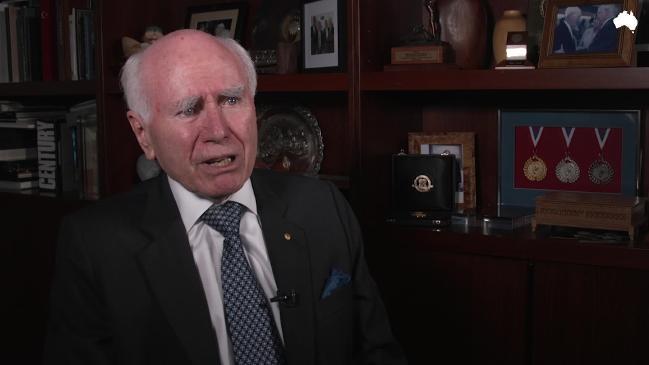Waterfront dispute was about productivity, not smashing a union
What the prime minister knew is a matter for him. Even I did not know about the dogs and balaclavas, which were an affectation of the security company in fear of safety of its employees impacted by a violent union.

Helen Trinca and her comrades have been trying to prove a conspiracy in the 1998 waterfront dispute for 27 years. Her latest attempt, which gained space in The Weekend Australian on June 21-22 in the news pages (“ ‘No intention to mislead’: Howard knew of secret tactics in waterfront dispute”) and in Inquirer (“What the PM knew about ‘dogs on the docks’ ”), is but another of her ridiculous claims. It proves no such thing.
This is the same author who, at her own book launch in 2000, demonstrated that she had no idea whatsoever about the gains in waterfront productivity achieved within two years since the dispute.
This dispute was always about productivity, not the removal of a union, but let’s look at the “new” claims of the conspiracy brigade.
The “new evidence” tendered by Trinca in her pieces and “discovered” by Macquarie University historian Geraldine Fela claims to show John Howard knew much more about the major stevedore’s plans than he admitted at the time.
What the prime minister knew is a matter for him, but he did not hear about training from me. We had no agreement on dogs, balaclavas, training or anything else except as set out below.

Even I did not know about the dogs and balaclavas, which were an affectation of the security company in fear of safety of its employees impacted by a violent union.
Trawling through Peter Reith’s diaries, Fela found that government adviser Stephen Webster had written a report “advancing various scenarios as a result of extensive discussions between Webster, other advisers, farmers, stevedores and others”, which she has turned into a conspiracy to suit an ideological outcome.
These were the days when governments actually wrote reports to inform ministers and outlining scenarios, rather than drawing childish cartoons of multi-eyed fish to argue a case.
However, the fundamental problem for the conspiracy advocates is very simple.
A criminal conspiracy is an agreement between two or more people to commit an illegal act. It involves not only the agreement but also an intent to carry out the illegal act.
The hypothesis of a conspiracy fails totally for the conspiratorial campaigners on the absence of any suggestion of an illegal act.
Patrick did not sack its workforce, as is repeatedly and incorrectly claimed.
The company that employed the workers became insolvent by dint of the repeated failure of the employees, encouraged by their union, to perform in accordance with the agreements they had signed.

An insolvent company cannot continue to engage in business once insolvent. This is what the High Court found to the confusion of the Maritime Union of Australia. It was also found by the administrators of the companies, Grant Thornton, that the companies were solvent and viable at the time of the agreements.
Had the employees behaved in accordance with their agreements the companies would have remained financially sound to this day.
In other words, there was no illegal act committed by the company and to the best of my knowledge by the government.
Had the court case brought by the union proceeded, they would also have found that there was no agreement with the government other than on one important point.
I had asked the government if, as a consequence of circumstances and the employee actions, employees become unemployed, that the government fund what would have been their redundancy payments, which were not payable in the case of insolvency. This money was recovered from an industry levy and repaid at commercial interest rates.
In summary, there was no illegal act and, second, there was no agreement about anything that resembled an illegal act. Hence there was no conspiracy.
Taxpayers may well question why 27 years after the events the government-owned broadcaster is spending taxpayer money to construct a seven-part podcast named Conspiracy?, which, by dint of the name alone, is designed to create a deliberately false and misleading narrative of events.
If they had taken some time to study the vital question of waterfront productivity for a trading nation they would have discovered this simple fact: As a result of the 1998 reforms the workforce was halved but, incredibly, container movements per hour doubled.
In other words, productivity on the Australian waterfront increased fourfold virtually overnight.
And to be clear, we didn’t need a conspiracy to achieve it.
Chris Corrigan is the former managing director of stevedoring and logistics company Patrick Corporation.





To join the conversation, please log in. Don't have an account? Register
Join the conversation, you are commenting as Logout